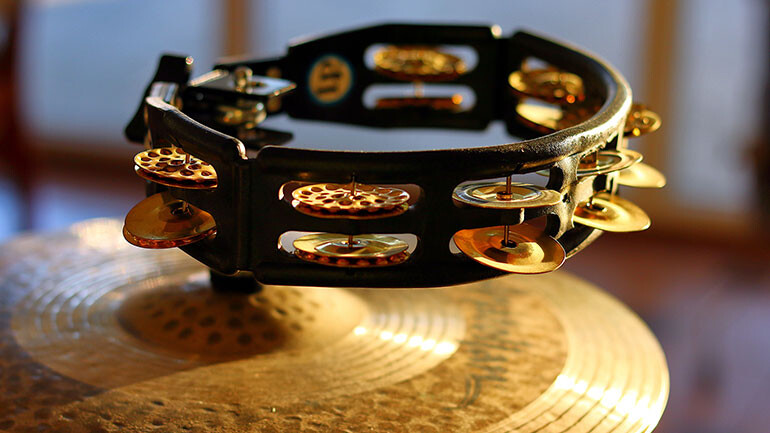Coloring With Percussion
Recording tambourine, shakers or other percussion instruments can require a fair amount of trial and error before you get it right

When working on a new song arrangement, sometimes it’s those little things that can make the biggest difference. Take hand percussion—whether you realize it or not, bringing in a set of maracas at the start of a chorus not only moves the rhythm forward, it also helps the listener identify the hook. Additionally, niche instruments like vibraslap, claves, cabasa and other Latin-oriented percussion can be used to accent certain sections, further adding to the song’s appeal.
Though it may seem simple enough, overdubbing percussion may require a fair amount of trial and error before you get it right. Does the tambourine hit come down on every beat, every other beat, or do you mix it up? Do maracas stay in the mix the whole time, or only during specific sections? You’ll also want to know the best way to situate the microphone when tracking percussion, not to mention how to get the track to properly sit in the mix.
A good room. Start by finding a decent spot to set up shop. Naturally this can vary depending on the percussion type, but in general the center of an acoustically friendly room will keep wall reflections from getting in the way. You’ll want to allow a decent amount of space between the player and the microphone, even with quieter instruments such as shakers, finger cymbals and the like—if you get too close, the recording may be lifeless and brittle-sounding.
Microphone choices. While almost anything in your arsenal will do when miking up percussion, a lot depends on the type of instrument you’re playing. On the one hand, the wider range and tonal versatility of a condenser microphone is often the best way to record cowbell, woodblock or claves, whereas a dynamic or ribbon microphone may be preferable when tracking brighter instruments like shakers, maracas or tambourine, as well as congas, bongos, and other drum-like products. When using a condenser, set the capsule to cardioid mode (one side live only) for the most direct sound and, as noted above, situate the mic at least a few feet from the player or until the blend feels right through a set of headphones. To help reign in high end when recording tambourine, try placing the microphone several feet above the player and angled slightly upward so that the sound leans percussive and less jangly. Or you could consider placing a second microphone near the bottom of a conga drum to fully capture that instrument’s bass energy.
Adjust the touch. A good miking setup is one thing, but adjusting the way you play a piece of percussion is also important. If a tambourine overdub seems to lack focus at first, try tightening the wrist as you’re playing so the jingles produce a more staccato sound (the same goes for maracas and related instruments). When recording congas or bongos, as well as percussion that uses a stick or mallet, just slightly altering the spot where you strike the instrument can result in a markedly different tone.
Experiment. Spend some time experimenting with different types of percussion to ensure you’re using the right tool for the job. A pair of vigorously shaken maracas might suffice on an electric track, however you may find that a cabasa or small shaker is better suited for an acoustic or otherwise quieter recording. Which is why it’s a good idea to have a basic collection of percussion makers at the ready—a few egg shakers and tambourines in various sizes, a set of bongos or conga to help fortify the backbeat, perhaps some exotic stuff like triangle, finger cymbals, vibraslap, guiro and the aforementioned cabasa as you go along.






Community
Connect with BMI & Professional Songwriters